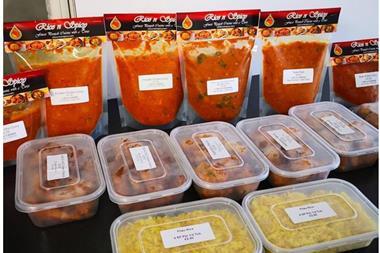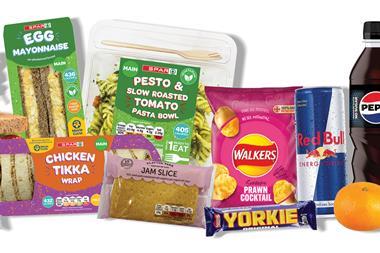Social media marketing is a vital business tool, but many retailers still struggle to win over shoppers online. Here we highlight top web tricks
Shoppers are influenced more and more by comments and pictures they see on social media and, as such, retailers are frequently being advised to become a part of the online world and promote their stores in this space. However, there are also plenty of potential minefields to avoid.
Andy Dike, managing director of Dike and Son, in Dorset, has managed to build an online community of more than 4,200 through his Facebook page.
Andy says retailers have to be prepared to frequently and actively engage with their shoppers in order to make the social media site work for their business – while taking care not to alienate them.
“It’s not hard to keep on top of the page. It’s well worth answering people’s questions and responding to comments as it’s the difference between a new regular shopper and a lost shopper. Social media can work really well but it can also work the other way.”
Another retailer who is well practised at spending every day speaking to her online community is Mandi Duncan, co-owner of two Day-Today stores in Troon, Ayrshire.
Mandi believes it is important to be available to answer potential shoppers’ questions via social media platforms as this helps to build more positive reactions online. She and the store’s co-owner Ross look after their Facebook pages and make sure messages and questions are responded to as quickly as possible. “Ross and I look after it between us and we just say whoever sees the question first, can answer,” she says. “People will regularly send us private messages to ask if we have certain products in stock or if we can get a new product in.”
The time taken to respond to these private messages is becoming even more important as Facebook now tells users the average time that is taken for the page host to respond to instant messages.
But it’s not just time that’s required; retailers have to speak to their shoppers in the right way in order to gain engagement through the site. Marie Sagarzazu, head of UK at conversational marketing platform iAdvize, explains that retailers need to speak to their shoppers on a “human level”.
“It’s an opportunity to become a part of your shoppers’ everyday lives. The conversation a brand has with shoppers can be a true differentiator which could be more effective than traditional advertising.
“The human touch can generate value for retailers, especially in this world where so many businesses rely on AI. We have gone beyond the race towards who can have the most ‘likes’ - now it’s more important to get the engagement from followers.
“When speaking to shoppers, they will engage more when you talk about feelings, thoughts and emotions, rather than products, so make the products relevant to something in their day-to-day life.
“An example of this can be to mention the weather, or an upcoming event, or plans for the weekend, and suggest a product that fits with plans the customers might have.
“It’s also helpful to pick up on the interests and conversation trends of your shoppers and involve yourself in those,” she adds.
There are many ways to bring the human element onto your Facebook page. Some retailers will simply relate their product range to their shoppers’ needs such as by posting a photo of the store’s flower display during the end of school term, when people are looking for presents for their teachers.
Mandi likes to keep her Facebook page human-cenric by posting lots of humorous photos of her staff having fun and dressing up in the store.
Dike & Son shrewdly tapped into the human factor by posting an image of a local five-year-old child who chose to dress up as one of the store’s shopkeepers for his ‘what I want to be when I’m older’ fancy dress day at school. The post was liked 155 times and was “humanised” further when the boy’s mother commented on the post: “Thank you very much for all your help for letting him become a shopkeeper for the day! He was very proud of his uniform.”
Dike & Son’s Andy says the key to building positive connections with shoppers online is to keep things light-hearted and always involve the community.
“We try to think outside the box and post quirky things that people will find interesting. We try to have a bit of fun and not take ourselves too seriously. We steer clear of any sort of politics as that can be a potential minefield,” he says.
Further proving the point that posts need to tap into shoppers’ interests, Mandi says the most random message can gain the most traction on Facebook, just as long as it’s something that catches the community’s interest.
“We try to post something at least once a day, even if it’s just a funny video of a dog. One day Ross randomly posted a photo of an old-style electric carving knife and people went mad for it! We were getting messaged from South Africa, Australia, all over the world! It got out of control and every time someone commented on it, it would come to the top of our feed again. We thought about deleting it but eventually it calmed down and people seem to have moved on. Though every now and then I’ll still get people from South Africa responding to my posts.”
Although this may not have been quite the reaction Mandi and Ross aimed for, the post was a great example of how communities can keep a social media page ticking over. The ongoing comments would have kept the post on followers’ news feeds, and therefore kept the store front of mind.
Sagarzazu says it is important to allow a community to form around your brand, which happens when customers are encouraged to speak with one another.
“If one customer asks a question, such as about what a certain product tastes like, it’s okay to let another customer answer the question as this helps to create an online community and shoppers’ comments will be seen as genuine endorsements.”
Mandi says she wants to put her store on Tripadvisor as she knows people will often find stores this way. She takes online reviews seriously as she knows they are relied upon by some.
“We did have one bad Facebook review once which was from someone who didn’t like the fact we’d changed from Spar to Day Today. She gave us one star which I was quite devastated about, given all the hard work we’d put in to make the change, and she couldn’t see any of the benefits that came with the change. She was annoyed that we no longer stocked a certain type of sausage that we got through Spar.
“We responded to her directly to explain the reasons for the change but she didn’t ever respond.
“But apart from her, every review has been five stars so that’s great, and we’ve never had to ask people to review us either, people just do it,” she adds.
Responding to negative comments and reviews in this manner is essential, according to Sagarzazu, who says negative comments give retailers the opportunity to show they are listening and that they care.
“Even if the retailer doesn’t know the answer, then they should at least reply to say that they are looking into the customer’s complaint, to show the comment has been acknowledged, and by commenting the whole community can see you care.”
Kay Patel, who owns seven Bestway-supplied stores and a café in the London area, points out that, as with anything posted on social media, negative comments and reviews can very quickly “go viral”. He says his shoppers definitely take note of his rating, and word could easily spread fast if your rating is less than perfect.
“I know that people will click on the link to the website and can easily look up the rating and send a link to their friends.”
A Local Consumer Review Survey (2017, by Bright Local) into consumer attitudes toward online reviews for local businesses found that consumers are now reading reviews more frequently and forming opinions faster than in the past.
Unsurprisingly, this is even more so the case for younger consumers, with 58% of those aged 18–34 reading online reviews for local businesses at least once per month over the past year. For consumers aged 35–54, this reduces to 43%.
So there’s no doubt that social media is becoming an increasingly important marketing tool for c-store retailers.
The main site being used effectively by c-store retailers appears to be Facebook and the advice for gaining traction on this site is to actively engage with shoppers and speak as an individual, rather than as a business.
Food Porn
Use social media to grab a slice of the foodie factor
Some 18% of millennials say social media is more inspirational to their cooking than TV and magazines, and 19% state that social media has revolutionised the way they cook (Ubamarket 2018).
The obsession with good-looking food on social media has led to the well-known phrase ‘food porn’, which can be utilised to retailers’ advantage.
Allison Kugel, co-founder and CEO of PR app Upitch, says retailers should “recognize the food porn craze as your best friend, when it comes to growing your following and your business”.
Between the psychological cues you offer, the clever copy you write and the connections you forge with others on social media, you can leverage food porn for your business in a number of ways.
Kugel says photo-sharing apps are an absolute must, along with good lighting, effective hashtags and clever captions.
“You’ve got to do your homework by searching popular (and niche) hashtags, captioning the pic with something clever and engaging and seeing who you can tag that might be interested in your picture.
“Make sure your food images are well lit. With today’s technology you can overcome a slim budget by simply using photo editing apps that make your food pics stand out from the crowd.
“Use a human touch in your imagery. Food pics are great, but integrate pictures of people enjoying your food during happy and celebratory occasions. It will add a human interest component to your feed,” she adds.
“Play with food imagery when it comes to advertisements and promotional materials. We’ve already learned that people are more likely to respond with desire when shown pictures of food, than they are from a review, a menu, or a logo. Lead with food and then reel them in with additional information.”




























No comments yet